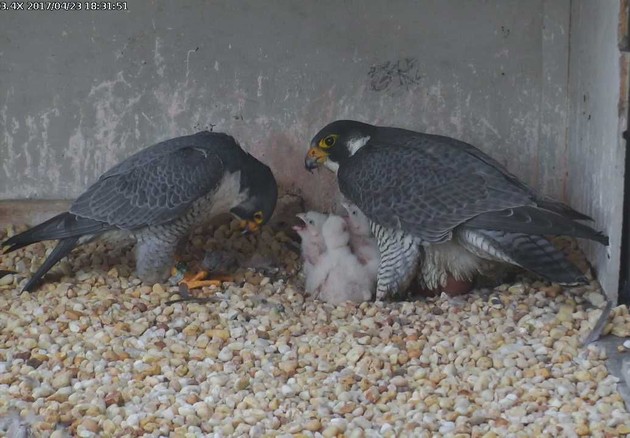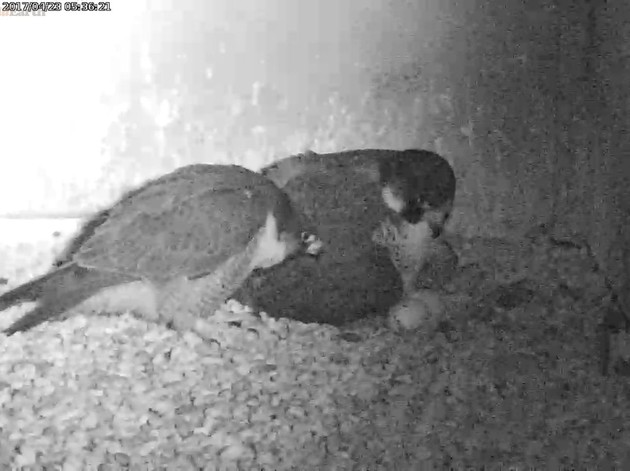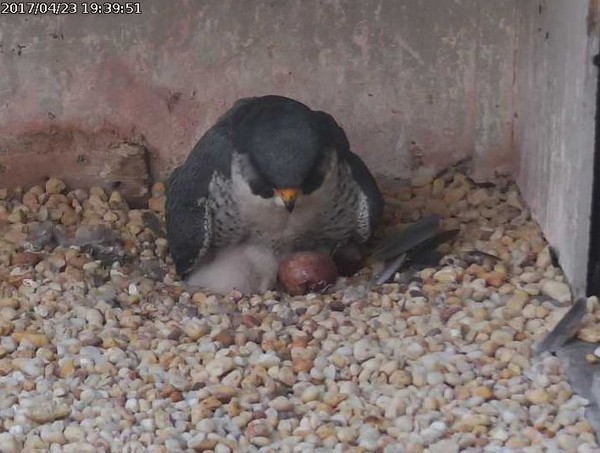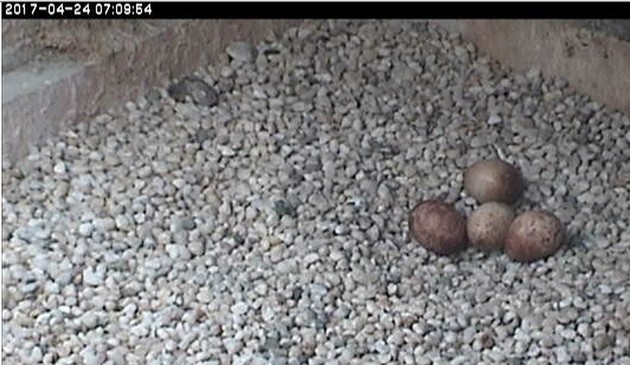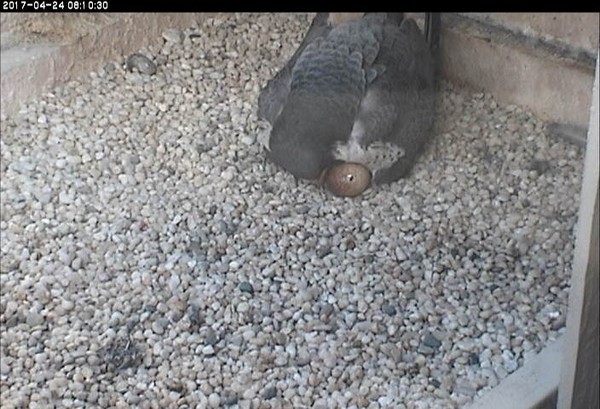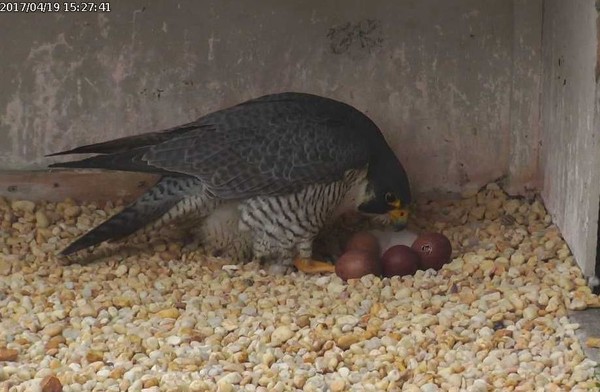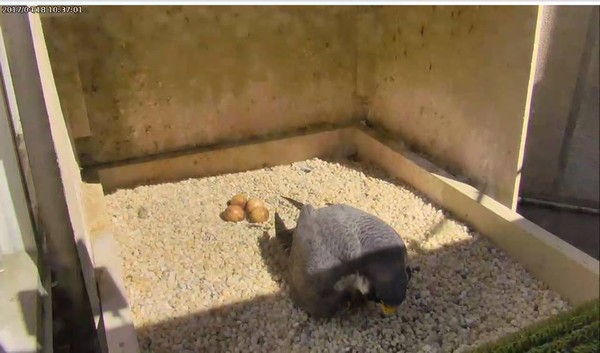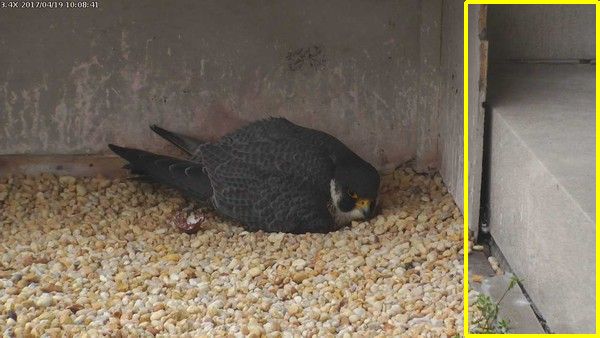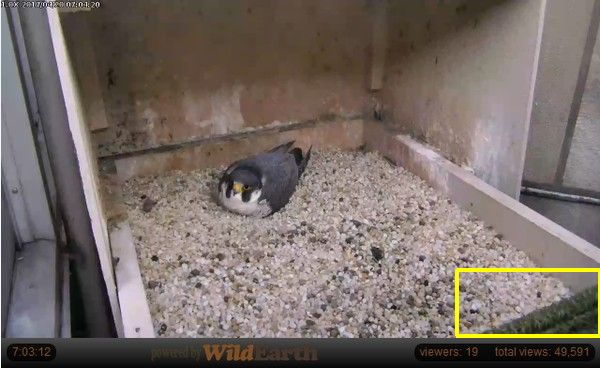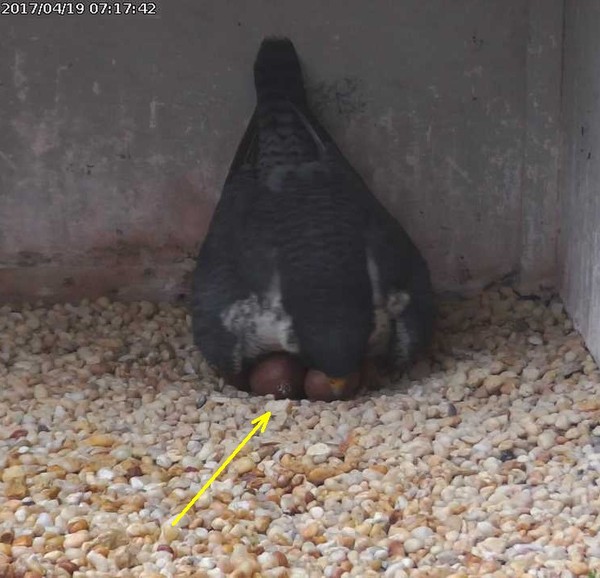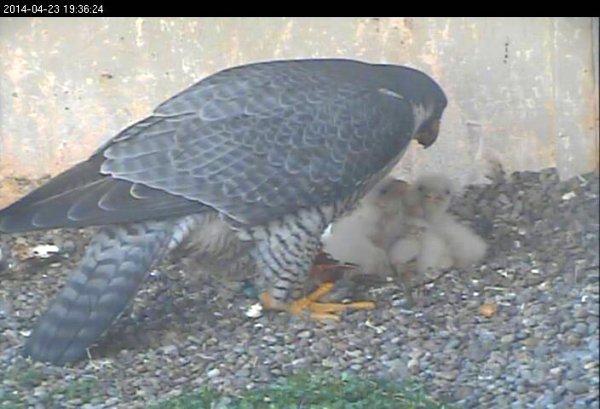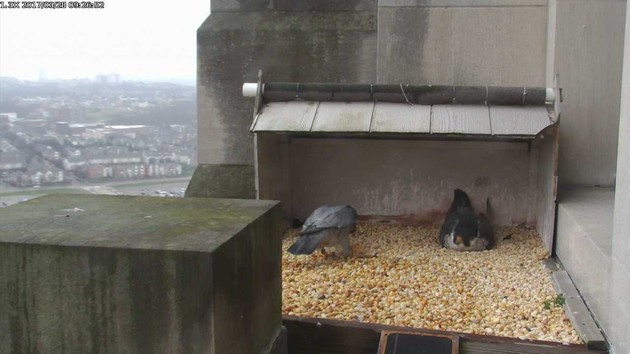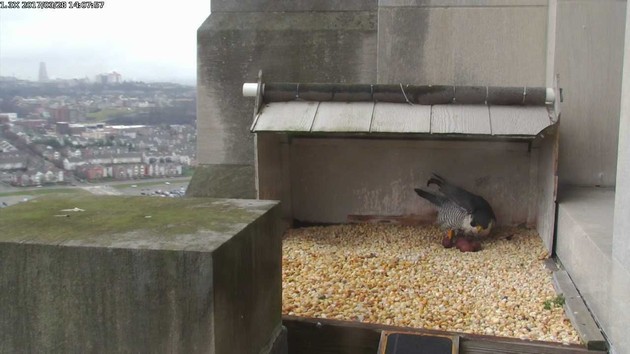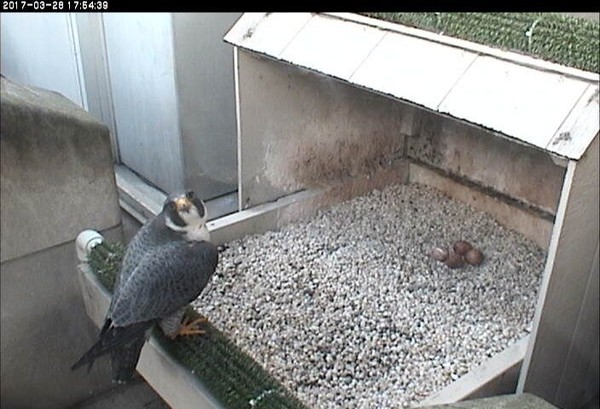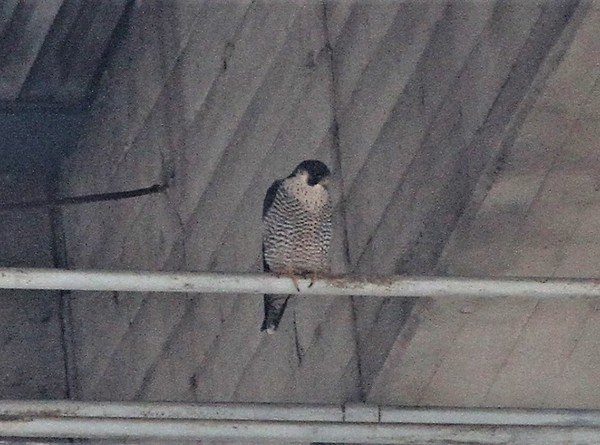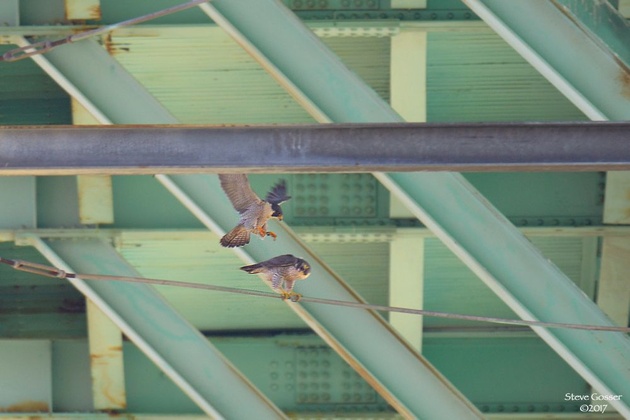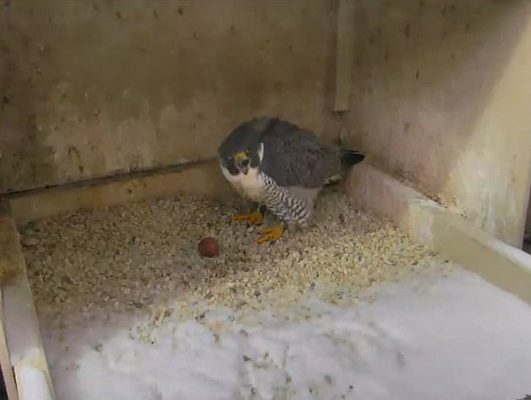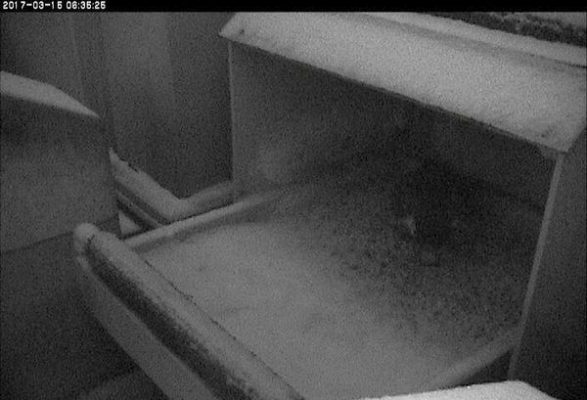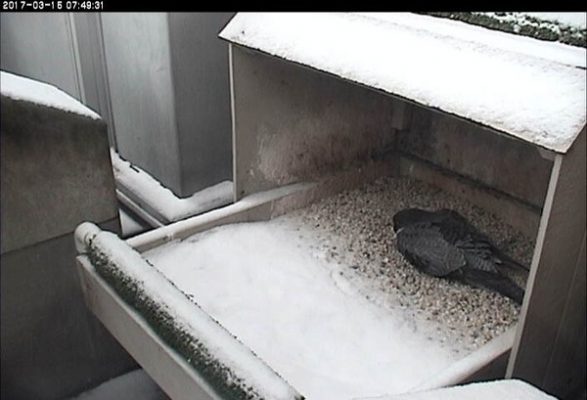
I recently cautioned viewers about watching the Cathedral of Learning falconcam because the female peregrine killed and ate some of her young last year as they hatched. I didn’t know if she would repeat this behavior. Last evening she did.
The first sign that Hope would kill the hatchling was around 6:15pm when she picked up and carried the hatching egg (above). Carrying is not normal. Half an hour later she killed and ate the chick and its eggshell.
Hope and her behavior were new to us last year. We didn’t know if she killed and ate some of her young because she was under many stresses: a new home at the Cathedral of Learning + loss of her mate + finding a new mate + other females challenging her while she was incubating the eggs.
This year none of those stresses apply. None of them. And yet Hope killed and ate her first hatchling last evening.
Last year one chick survived. This morning it appears that Hope has spared the second chick.

Here’s a snapshot showing there are no longer four eggs/chicks. Now there are only three.

But the chicks and eggs aren’t safe yet. The remaining two eggs might succumb and last year when a second chick hatched successfully, it died within a week. It failed to thrive. Some speculated that Hope starved it.
We don’t know why Hope does this but we now know it’s not a one-time event. She may have done this all her adult life but there was no camera at her former nest site, the Tarentum Bridge, where she fledged 0-to-2 young per year.
What’s next?
A Caution to Viewers:
Again, do not watch the Cathedral of Learning falconcam if it upsets you to see a mother kill her young. The Gulf Tower in downtown Pittsburgh has a beautiful peregrine family with three chicks. Please watch the Gulf Tower falconcam to learn about normal peregrine behavior!
A Caution to Commenters:
Though this situation resembles reality TV in which viewers can vote someone on or off the island, it is not a “voting” situation. If commenters become worked up and demand/request action in emails or phone calls to “those in charge” it will end the show. Literally. It will shut down the camera. That’s what happened when commenters went over the top at the Woods Hole Osprey-cam.
Normally I do not edit readers’ comments but this situation is not normal. If you post a comment that could inflame others, I will edit it or delete it.
Though I am not watching Hope closely (I don’t want see her kill her young), I do want the camera to stay up.
(photos from the National Aviary falconcam at Univ of Pittsburgh)
P.S. on the subject of names: At the Cathedral of Learning we use “C + Hatch Number” as the naming scheme for chicks. Last year had 4 chicks (C1 through C4) but only C1 survived. This year C5 was eaten, C6 is the now live chick. I will write more about names in the days ahead.
